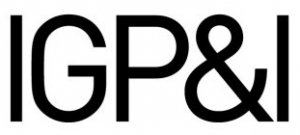<span>The narrow, shallow and congested Douala Channel presents some challenges</span>

Increased number of groundings in the Douala channel
Published 26 May 2015
Vessels inbound to Douala must follow a 50 km long and narrow channel on the Wouri River from the coast line before arriving at the port of Douala, Cameroon.
Gard is aware of at least eight groundings in the Douala channel since May 2014. Surveys have revealed some common factors for the groundings. Manoeuvring ships in and out of the port is challenging as the Douala channel is both narrow (150 m maximum) and shallow (6.2 m above chart datum) as well as being congested. The tidal river constantly deposits sediments and is not regularly dredged, leading to sand and mud banks forming within the channel limits. The draft is most likely not in accordance with the official charts. Vessels are often asked to proceed upstream beyond the pilot boarding ground before the pilot boards, resulting in insufficient time for the ship’s crew to familiarise themselves with the pilot’s intended passage plan. Furthermore, some of the navigation buoys have been unlit, out of position or missing at the time of the incidents.
In a recent Gard case the vessel left the anchorage and commenced the inbound route towards the port. The pilot boarding ground is charted at the start of the channel, but the pilot was not there, so the vessel was ordered by port control to continue her approach 7 NM upstream where the pilot would board. Whilst approaching the new boarding ground, an outbound vessel was sighted in the centre of the channel. As the channel is narrow, the Gard vessel was ordered a little to starboard to pass clear of the outbound vessel. Unfortunately, having cleared the outbound vessel the Gard vessel had grounded on mud banks.
Recommendations
The channel has a “V” rather than “U” profile, with many sand and mud banks close by. Particular attention must be paid if the vessel’s draft on arrival exceeds 8 m. The inner channel is narrow with depths outside the channel as little as 2.5 m, and the minimum charted depth in the channel ranges from 6.1 m to 6.5 m with the tidal ranges between 0.3 m to 2.9 m. It is therefore recommended to:
have on board a detailed berth to berth voyage plan
when entering the channel, navigate with extreme caution and stay in the centre of the channel at all times;
berth on high tide or arrange lightering during periods of port congestion or delays in berthing;
consider the increased risk of proceeding upstream from the charted pilot ground. Where possible it is always recommended to get the pilot on board at the charted boarding ground. This will help ensure a proper exchange of information between master and pilot; and
contact the ship’s agent or local correspondent for the latest information on unlit navigation lights or any other changes in the fairway going into Douala port. This information should also be included in the information exchange between the Master and the pilot.
Chart featured courtesy of Transas, TX97
Further details about Douala and its approach can be found in the Gard Insight, Douala – memories of a salvage expert from the gateway to Central Africa


